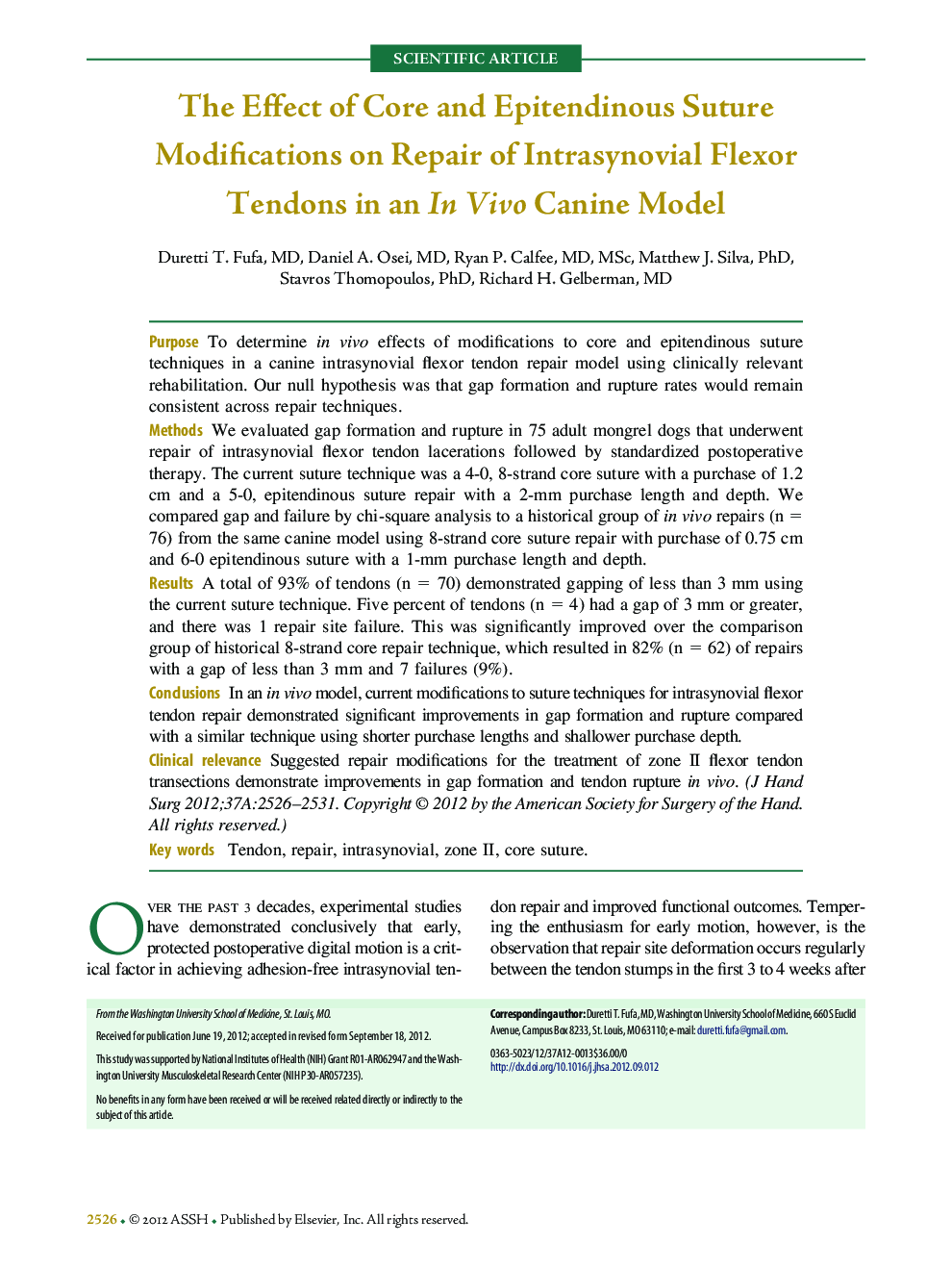| Article ID | Journal | Published Year | Pages | File Type |
|---|---|---|---|---|
| 4069980 | The Journal of Hand Surgery | 2012 | 6 Pages |
PurposeTo determine in vivo effects of modifications to core and epitendinous suture techniques in a canine intrasynovial flexor tendon repair model using clinically relevant rehabilitation. Our null hypothesis was that gap formation and rupture rates would remain consistent across repair techniques.MethodsWe evaluated gap formation and rupture in 75 adult mongrel dogs that underwent repair of intrasynovial flexor tendon lacerations followed by standardized postoperative therapy. The current suture technique was a 4-0, 8-strand core suture with a purchase of 1.2 cm and a 5-0, epitendinous suture repair with a 2-mm purchase length and depth. We compared gap and failure by chi-square analysis to a historical group of in vivo repairs (n = 76) from the same canine model using 8-strand core suture repair with purchase of 0.75 cm and 6-0 epitendinous suture with a 1-mm purchase length and depth.ResultsA total of 93% of tendons (n = 70) demonstrated gapping of less than 3 mm using the current suture technique. Five percent of tendons (n = 4) had a gap of 3 mm or greater, and there was 1 repair site failure. This was significantly improved over the comparison group of historical 8-strand core repair technique, which resulted in 82% (n = 62) of repairs with a gap of less than 3 mm and 7 failures (9%).ConclusionsIn an in vivo model, current modifications to suture techniques for intrasynovial flexor tendon repair demonstrated significant improvements in gap formation and rupture compared with a similar technique using shorter purchase lengths and shallower purchase depth.Clinical relevanceSuggested repair modifications for the treatment of zone II flexor tendon transections demonstrate improvements in gap formation and tendon rupture in vivo.
